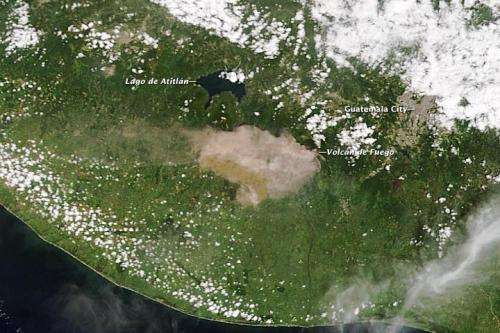Guatemalan volcano erupting: NASA provides a satellite view

One of Central American's most active volcanos erupted on September 13th, 2012 prompting officials to evacuate 35,000 residents in Guatemala. The Volcan de Fuego, or Fire Volcano, began belching out ash at 10 a.m. local time with ash now falling up to 40 kilometers (25 miles) from the volcano. Residents within 20 kilometers (12 miles) of the volcano were being removed from the area in buses and cars.
According to the Coordinadora Nacional para la Reducción de Desastres (CONRED), the eruption included ash emissions to the west and a 500-meter (2,000-foot) long lava flow. CONRED also warned of pyroclastic flows that could descend the mountain in any direction.
This natural-color image captured the eruption just as it occurred, NASA said. The image was acquired by the Moderate Resolution Imaging Spectroradiometer (MODIS) aboard the Terra satellite.
Thursday's eruption was the sixth of the year for this volcano and some officials said it may be the biggest.
NASA said they would publish imagery of Guatemala two times per day on the MODIS Rapid Response web site.
Source: Universe Today





















